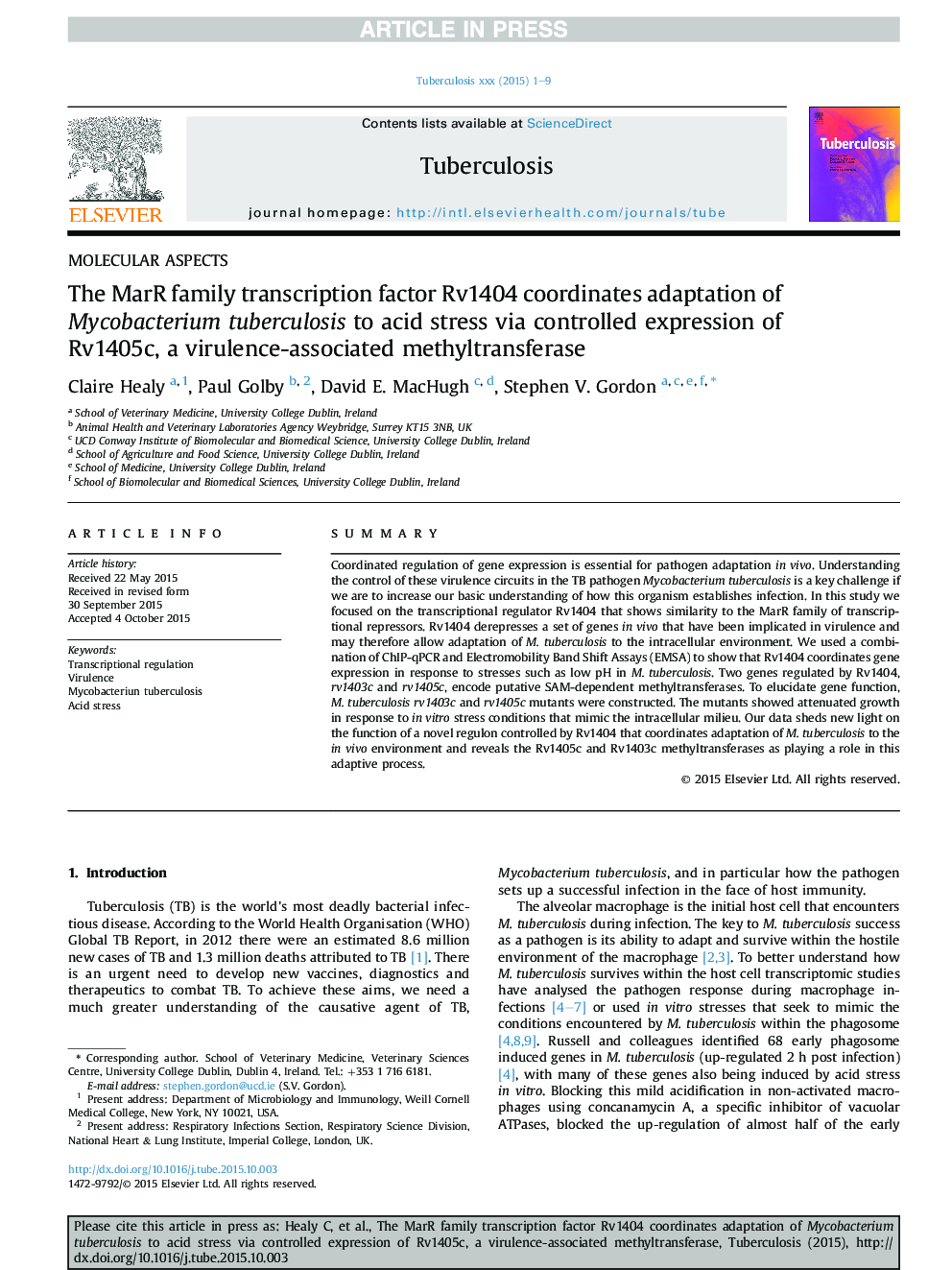| Article ID | Journal | Published Year | Pages | File Type |
|---|---|---|---|---|
| 8485311 | Tuberculosis | 2016 | 9 Pages |
Abstract
Coordinated regulation of gene expression is essential for pathogen adaptation in vivo. Understanding the control of these virulence circuits in the TB pathogen Mycobacterium tuberculosis is a key challenge if we are to increase our basic understanding of how this organism establishes infection. In this study we focused on the transcriptional regulator Rv1404 that shows similarity to the MarR family of transcriptional repressors. Rv1404 derepresses a set of genes in vivo that have been implicated in virulence and may therefore allow adaptation of M. tuberculosis to the intracellular environment. We used a combination of ChIP-qPCR and Electromobility Band Shift Assays (EMSA) to show that Rv1404 coordinates gene expression in response to stresses such as low pH in M. tuberculosis. Two genes regulated by Rv1404, rv1403c and rv1405c, encode putative SAM-dependent methyltransferases. To elucidate gene function, M. tuberculosis rv1403c and rv1405c mutants were constructed. The mutants showed attenuated growth in response to in vitro stress conditions that mimic the intracellular milieu. Our data sheds new light on the function of a novel regulon controlled by Rv1404 that coordinates adaptation of M. tuberculosis to the in vivo environment and reveals the Rv1405c and Rv1403c methyltransferases as playing a role in this adaptive process.
Related Topics
Life Sciences
Immunology and Microbiology
Applied Microbiology and Biotechnology
Authors
Claire Healy, Paul Golby, David E. MacHugh, Stephen V. Gordon,
